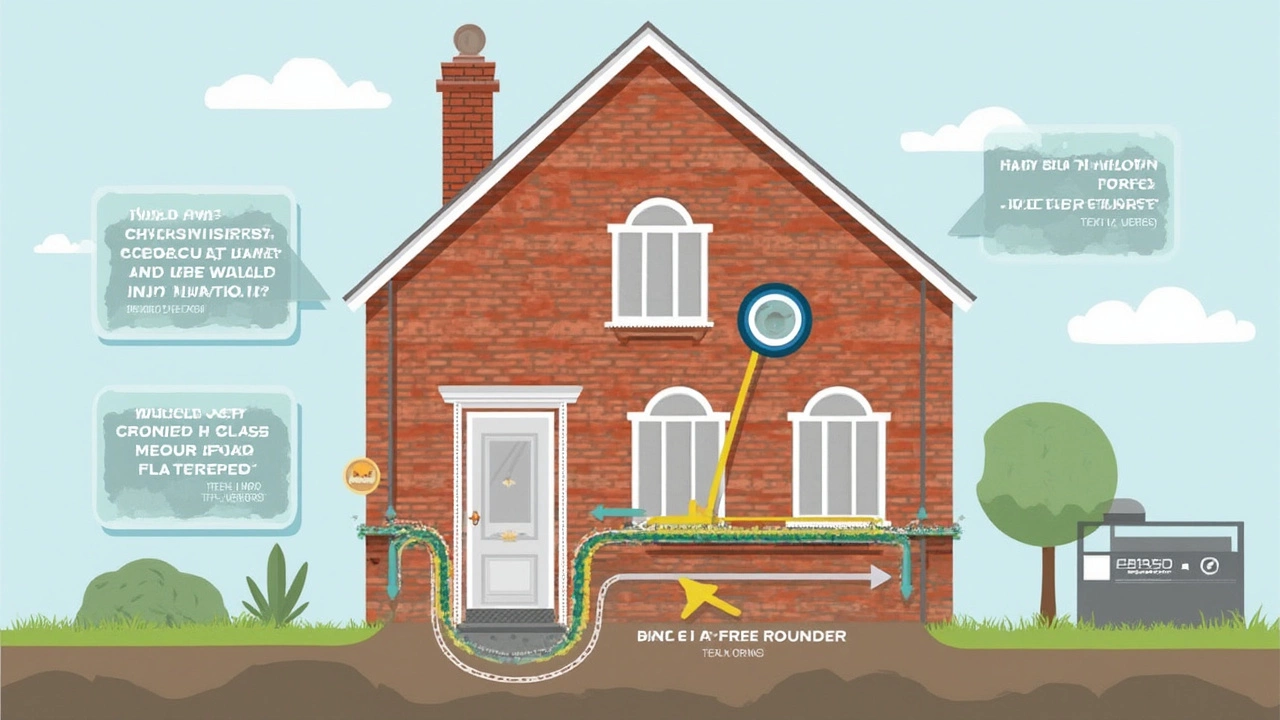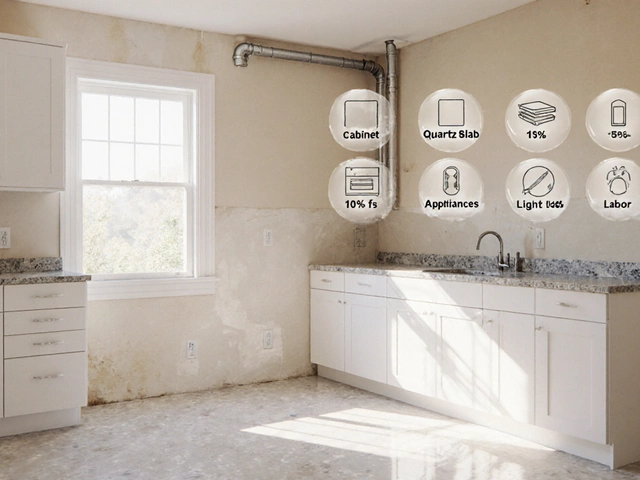
Notice a crack in your foundation and can’t decide if it’s just a cosmetic blip or a deal-breaker? You’re not alone. Foundation cracks look scary, but most houses have them, and size matters more than you’d think. The truth: some cracks are totally normal and just part of a house settling, while others are red flags you can’t ignore.
The key question is, how wide is too wide? Industry pros usually say anything under 1/8 inch (that’s about the thickness of two credit cards stacked together) is harmless as long as it doesn’t grow or change. Cracks wider than that, especially ones you can fit a coin into, need a closer look—especially if they keep getting bigger or show up fast after heavy rain or drought.
So, before you grab the epoxy or lose sleep over hairline gaps, it’s worth learning how to size up foundation cracks at home. There are simple ways to track their growth—no PhD required. And knowing what’s normal gives you the upper hand, both for your wallet and your peace of mind.
- Why Do Foundations Crack?
- Measuring Crack Size: How Small Is 'Acceptable'?
- Types of Cracks: When To Panic and When To Relax
- Tips for Monitoring Cracks at Home
- Getting Help: When It’s Time to Call a Pro
Why Do Foundations Crack?
Everyone freaks out at the first sign of a crack, but honestly, foundation cracks are super common. They happen for plenty of reasons—some are just part of the house aging, and others are tied to stuff you can actually do something about.
The most common reason? Soil movement. About 80% of all foundation damage in the U.S. comes from expanding or shrinking soil under your house. Clay-heavy soil swells up when it rains and shrinks when it’s dry. This up-and-down cycle puts stress on your slab or basement walls. If the pressure gets too much, things start to crack.
Another big one: water trouble. When your gutters dump water right by your foundation, or you live somewhere with poor drainage, water builds up against the concrete. Over time, that water can find tiny holes or weak spots, making them bigger and causing cracks.
Temperature swings mess with foundations, too. Concrete expands in the heat and shrinks in the cold. If you’re in a climate where the ground freezes and thaws a lot, you’ll see more cracks pop up in winter and spring.
Don’t forget stuff like bad construction, earthquakes, tree roots, or remodeling jobs that add a lot of weight. These can all stress your foundation in different ways.
- foundation crack size often depends on how much movement or pressure the soil creates.
- Homes built before the 1970s, before building codes got stricter, are more likely to have foundation issues.
- If your foundation wasn’t poured right or cured too quickly, cracks show up sooner and grow faster.
Check out some quick stats below:
| Cause | Percent of Cases |
|---|---|
| Soil movement (heave/shrink) | ~80% |
| Water/drainage problems | ~10% |
| Poor construction/mistakes | ~7% |
| Other (roots, quakes, etc.) | ~3% |
Long story short: you might not be able to stop all cracks, but understanding why they happen helps you keep the big ones from turning nasty.
Measuring Crack Size: How Small Is 'Acceptable'?
When it comes to foundation cracks, size really is the first thing you need to check. Tiny, hairline cracks show up in new and old homes, usually from concrete shrinking as it dries. These aren’t usually a big deal—pros often say cracks less than 1/16 inch (about as thick as a dime) are just cosmetic. Once cracks get between 1/16 and 1/8 inch, you should keep an eye on them, but you don’t need to panic just yet.
The magic number most inspection guides and building codes use is 1/8 inch (roughly 3 mm). If your crack is wider than that, especially if it’s growing, you might have a problem that needs attention. Why 1/8 inch? Engineers have found that cracks wider than this can let water seep in, pests sneak through, or even hint at bigger shifts in your foundation.
Here’s a simple breakdown of what different crack sizes usually mean:
| Crack Width | What It Might Mean | Recommended Action |
|---|---|---|
| < 1/16 inch (1.5 mm) | Normal shrinkage, minor settling | Monitor every few months |
| 1/16 – 1/8 inch (1.5 – 3 mm) | Moderate movement, still common | Mark and check regularly |
| > 1/8 inch (> 3 mm) | Possible structural shift | Talk to a foundation specialist |
Want to measure a crack quickly? Grab a ruler or even a business card, since most are about 1/32 inch thick. Hold it against the crack—if it fits snugly, it’s tiny. A nickel is about 1/16 inch, and two stacked credit cards are around 1/8 inch. For bonus accuracy, you can buy a cheap crack gauge online.
But don’t forget, width isn’t all that matters. Also pay attention if cracks start running diagonally or zig-zag up your wall, open up suddenly, or are paired with weird things like doors sticking or floors sloping. These details matter for figuring out if your foundation crack size is more than just cosmetic.

Types of Cracks: When To Panic and When To Relax
Not all cracks in your foundation are out to ruin your day. They come in different types, and each one tells a different story about what’s going on with your house. Some, you can ignore and move on. Others? Better keep an eye out, or you could end up with bigger, costlier problems down the line.
Here’s a quick roundup of what’s common, what’s weird, and what’s downright alarming:
- Hairline cracks: These are super thin—usually less than 1/16" wide. They pop up as your concrete dries or your home settles right after construction. Most of the time, nothing to lose sleep over.
- Vertical cracks: These run up and down. If they’re less than 1/8" wide, they’re usually just your house shifting a bit. Common in new homes.
- Horizontal cracks: These are the ones to watch. Horizontal cracks in basement walls usually mean outside pressure, like too much water in the soil. These cracks can signal potential for bowing walls and are a big red flag.
- Stair-step cracks: You’ll see this in brick or block foundations. Think a crack that zig-zags like steps. If they’re narrow and not growing, not a big deal. If they get wider at one end or keep growing, it’s time to worry.
- Diagonal cracks: They run at an angle, and can be harmless or serious, depending on the width and whether both sides of the crack are uneven. Wider than 1/8" or shifting? Call a pro.
Still not sure what you’re seeing? The American Society of Home Inspectors says:
“Most foundation cracks under 1/8 inch wide are not considered structural. The real concern is movement and water intrusion.”
At the end of the day, it’s not just the look but the behavior of the crack that matters. Cracks that get longer, wider, leak water, or show uneven shifting of surfaces are always a call to action.
| Crack Type | Common Width | Should You Worry? |
|---|---|---|
| Hairline/Vertical | < 1/8" | No, but monitor |
| Horizontal | > 1/8" | Yes, get it checked |
| Stair-step | Varies | If widening, act fast |
| Diagonal | > 1/8" | Sketchy, call a pro |
If you spot a foundation crack size that’s bigger than 1/8", or you notice moisture, musty smells, or sticking doors and windows, don’t wait for it to fix itself. Sometimes it’s just a cosmetic fix, but it can also be your house crying for help. Better safe than sorry—and usually cheaper, too.
Tips for Monitoring Cracks at Home
Keeping an eye on cracks isn’t rocket science, but you want to be consistent about it to spot any real problems early. Here’s how to get it done without turning into a home inspector yourself.
- Foundation crack size is the thing to measure first. Use a ruler, tape measure, or even a crack gauge card (cheap on Amazon) to see how wide the crack is. Note the size to the nearest millimeter or 1/16 inch.
- Snap a photo of each crack with your phone. Turn on the date stamp or put a coin next to it for reference. Photos help you keep track of any changes over time—memory alone just doesn’t cut it.
- Mark the ends of the crack with a pencil so you can see if it gets longer. Just draw a small line and note the date next to it. Every couple of months, check the marks and see if anything’s changed.
- Set reminders on your phone to check the cracks every 1-2 months. People forget, and tiny changes can add up fast.
- If you want to get really technical, there are inexpensive crack monitors (little plastic gadgets that stick on the wall and show movement in millimeters). These are used by pros and are super easy to read.
If you notice the crack is growing wider or longer quickly, or if you see new cracks after a heavy rain, call a foundation specialist sooner rather than later. Cracks that stay the same size for months are rarely a big deal.
| Width (inches) | What It Means | Action |
|---|---|---|
| < 1/16 | Hairline, likely normal | Monitor every few months |
| 1/16 to 1/8 | Minor, but worth watching | Check for growth; photo log |
| > 1/8 | Potential structural concern | Call a pro if growing |
Here’s a bonus tip: Watch out for cracks joined by wall bowing, sloping floors, or doors that stick. These combo signals can mean bigger foundation shifts, and that’s when you need expert eyes without delay.

Getting Help: When It’s Time to Call a Pro
So you’ve measured your crack and it’s wider than 1/8 inch, or you notice it growing every time you check. That’s the point when you don’t want to mess around—you need a foundation specialist. Trying to patch up serious cracks on your own can make things worse or just kick the real problem down the road. Cracks running diagonally, especially from doors or windows, or horizontal cracks (not just up and down ones) should get checked out right away—these are more likely to mean real structural issues.
Movement is another red flag. If you spot sticking doors, windows that won’t close, or floors that suddenly feel uneven, those all point to shifting that’s more than cosmetic. This is where pro help pays off—a licensed inspector uses specialized tools to track movement, measure moisture, and spot hidden problems you might miss.
Here are specific times you really need a pro:
- The crack is wider than 1/8 inch and getting larger.
- Cracks are horizontal (not vertical), especially in basement walls.
- Multiple cracks show up suddenly, especially after extreme weather.
- Doors and windows start to jam or stick for no clear reason.
- You see water leaking through the foundation or damp spots on the walls.
If you’re selling or just bought a house, a foundation inspection can also reveal problems early, so you’re not stuck with a bigger bill later. Most foundation repair pros offer free or low-cost initial assessments. They’ll write up a report so you can see the real state of things and price out your next step. According to HomeAdvisor, the average cost of a foundation inspection in the U.S. is between $300 and $800, but serious repairs can jump above $5,000 if you wait too long.
| Type of Crack/Sign | DIY OK? | Call a Pro? |
|---|---|---|
| Hairline (< 1/16 inch) | Yes | No |
| Up to 1/8 inch, not growing | Yes | No |
| Over 1/8 inch, growing | No | Yes |
| Horizontal/diagonal cracks | No | Yes |
| Sticking doors/windows, uneven floors | No | Yes |
If any of these warning signs pop up in your home, don’t wait it out. Getting a specialist in early can mean a simple fix instead of a full-on disaster down the line. The sooner you know what you’re dealing with, the cheaper and less stressful it is.
Don’t forget—your home is probably your biggest investment. Keeping on top of foundation crack size and getting expert help when you need it is just protecting what’s yours.




